Top Awesome Bike Chain Lube Alternatives: Cyclist knows that maintaining a smooth and efficient ride involves more than just pedaling – it’s about caring for your bike. One crucial aspect of bike maintenance is keeping the chain well-lubricated to ensure optimal performance.
Key Takeaways:
- Explore alternative lubes like vegetable oil, beeswax, and olive oil for effective chain maintenance beyond traditional options.
- Consider eco-conscious alternatives such as beeswax or paraffin wax to reduce your environmental impact.
- Everyday items like cooking spray or household oils can serve as cost-effective and easily accessible chain lubes.
- Tailor your choice based on riding conditions; graphite powder for dry conditions or non-detergent motor oil for versatility.
- Regardless of the lube chosen, consistent cleaning and reapplication ensure a smooth and enjoyable cycling experience.
While traditional bike chain lubes are widely available, some cyclists prefer exploring alternative options for various reasons, from environmental concerns to cost-effectiveness.

7 Awesome Bike Chain Lube Alternatives
Explore eco-friendly options like beeswax or household staples like vegetable oil and olive oil as alternatives to traditional bike chain lubes, offering cost-effective and efficient solutions for a smoother ride.
Here, we’ll delve into 7 of the best bike chain lube alternatives that can keep your ride running smoothly.
1. Vegetable Oil
Using vegetable oil as a bike lubricant may provide a short-term solution for chain lubrication, but it tends to collect dirt, breaks down quickly, and washes away easily. The effectiveness may be limited, and regular reapplication is advised for optimal performance.
- Readily Available: Easily accessible from your kitchen or local grocery store.
- Cost-Effective: A budget-friendly option for cyclists.
- Decent Lubrication: Provides adequate lubrication for the chain.
- User-Friendly Application: Can be easily applied using a brush or cloth.
- Environmentally Friendly: Biodegradable and poses minimal environmental impact.
- Wipe-Off Excess: Requires wiping off excess oil to prevent attracting dirt.
A readily available and cost-effective option, vegetable oil serves as an excellent alternative to traditional chain lubes. It provides adequate lubrication and can be easily applied using a brush or cloth. However, it’s essential to wipe off any excess oil to prevent attracting dirt and debris.
2. Beeswax
- Eco-Friendly: Derived from natural sources, making it environmentally conscious.
- Protective Coating: Forms a protective layer on the chain for enhanced durability.
- Readily Available: Beeswax-based lubes are commonly found in cycling stores.
- Biodegradable: Decomposes naturally, reducing environmental impact.
- Easy Application: Applies easily with minimal effort.
- Regular Maintenance: Requires more frequent application than some alternatives.
Beeswax-based lubes are gaining popularity among environmentally conscious cyclists. Beeswax offers a natural and eco-friendly solution, providing a protective coating for the chain. It may require more frequent application than traditional lubes, but its biodegradable nature makes it an attractive choice.
3. Olive Oil
A kitchen staple with surprising versatility, olive oil can double as a bike chain lube. It’s readily available, affordable, and provides decent lubrication. However, similar to vegetable oil, it’s crucial to wipe off excess oil to prevent a buildup of grime.
- Household Staple: Found in most kitchens, making it easily accessible.
- Affordable: A cost-effective alternative to specialized lubes.
- Decent Lubrication: Provides reasonable lubrication for the chain.
- Easy Application: Can be applied using a brush or cloth.
- Biodegradable: Environmentally friendly and decomposes naturally.
- Excess Oil Removal: Requires wiping off excess oil to avoid attracting debris.
How To Use Olive Oil As Bicycle Chain Lube?
To use olive oil as bicycle chain lube, simply pour a small amount on a paper towel or rag, then apply it to the chain. Ensure it penetrates the metal by moving the chain a few times. Wipe off excess oil with a dry towel. While olive oil is a quick and frugal fix, it’s recommended for temporary use, and extra virgin oil is preferable for better penetration.
4. Paraffin Wax
- Clean Lubrication: Forms a clean and efficient coating on the chain.
- Reduced Friction: Minimizes friction, extending drivetrain component life.
- Durable Coating: Offers long-lasting protection against wear and tear.
- Environmentally Neutral: Doesn’t pose significant environmental concerns.
- Solid Form: Easy to control during the application process.
- Application Involvement: Requires a bit more effort during application.
For a clean and efficient alternative, paraffin wax is a solid choice. It forms a durable coating on the chain, reducing friction and extending the life of your drivetrain components. While the application process might be a bit more involved, the benefits make it worthwhile for many cyclists.
How To WAX Bicycle Chain using paraffin wax
To wax your bicycle chain using paraffin wax, follow these steps:
Chain Cleaning:
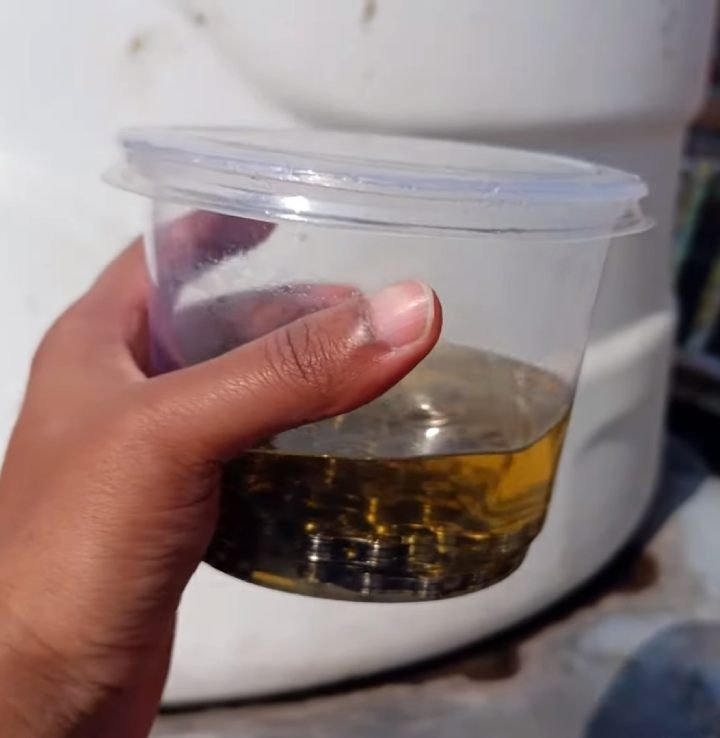
- Remove the bicycle chain and soak it in petrol or diesel overnight to clean it.
- Use soapy water and a brush to further clean the chain, ensuring it’s free from grease and dirt.
Degreasing:
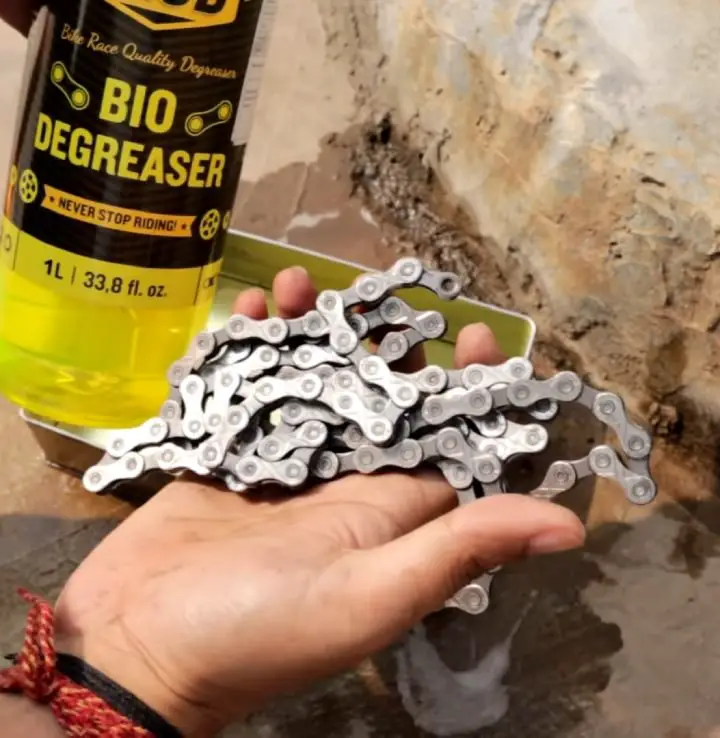
- Apply a bicycle-specific Degreaser to the chain, allowing it to break down grease and oil.
- Clean the chain with hot water and soapy water, then leave it to dry for 10-15 minutes.
Isopropyl Alcohol (IPA) Bath:
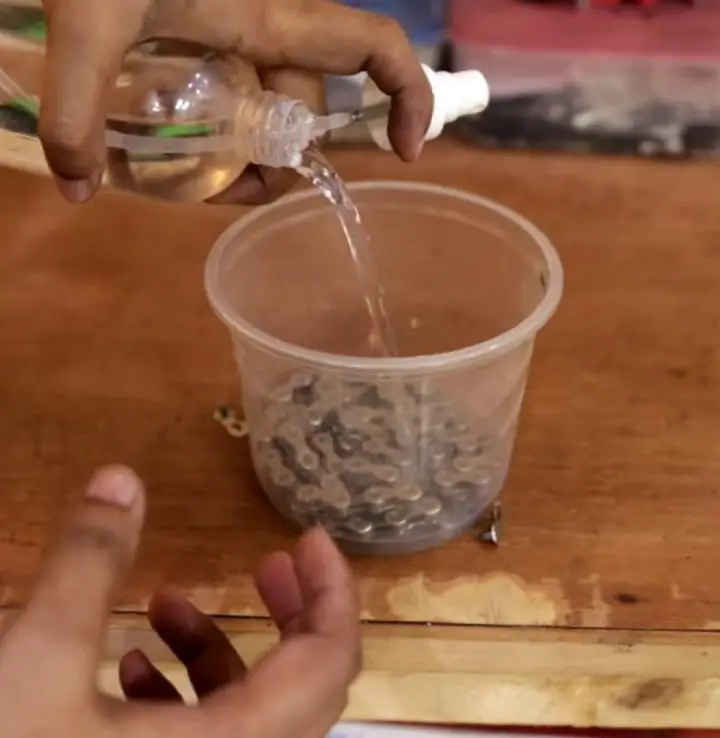
- Soak the chain in isopropyl alcohol to remove any remaining contaminants.
- Allow the chain to drip off excess IPA before cleaning it with a cloth.
Waxing:
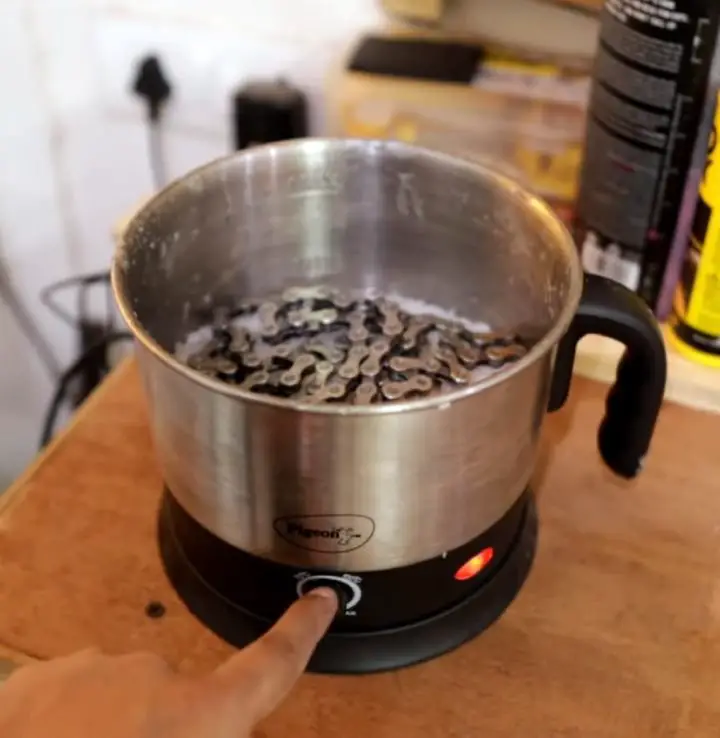
- Melt paraffin wax in an electric cooker (set at around 80 degrees Celsius).
- Submerge the chain in the melted wax for 5-10 minutes until the top layer becomes solid.
- Remove the chain, letting excess wax drip back into the cooker.
Reassembly:
- Break the links to remove excess wax.
- Reattach the chain using quick links.
- Clean the drivetrain and shift through all gears to remove additional wax.
Rust Prevention:
- To prevent rust, rub a small amount of WD-40 onto the chain’s outer and top layer using a cloth.
Final Steps:
- Check for any remaining wax on the chain and clean it if necessary.
- Ride the bike through all gears to ensure smooth performance.
5. Pam Cooking Spray

- Convenient Application: Quick and easy spray-on application.
- Accessible: Found in most kitchens, providing a readily available solution.
- Short-Term Lubrication: Ideal for temporary or emergency use.
- Inexpensive: A cost-effective and readily available option.
- User-Friendly: Simple application process without much hassle.
- Limited Longevity: May not offer as durable lubrication as some alternatives.
An unconventional but surprisingly effective option, Pam cooking spray can serve as a quick fix for chain lubrication. The spray-on application is convenient, and the formula provides adequate lubrication for short-term use. However, it may not be as durable as some other alternatives.
6. Graphite Powder
- Low Friction: Provides low-friction lubrication, ideal for dry conditions.
- Lightweight: Does not add significant weight to the bike.
- Repels Dirt: Excellent at repelling dirt and grime.
- Off-Road Suitability: Suitable for off-road cyclists due to its dirt-repelling properties.
- Quick Application: Easy to apply without extensive effort.
- Frequent Reapplication: May require more frequent reapplication, especially in wet conditions.
Ideal for dry conditions, graphite powder is a lightweight and low-friction lubricant. It’s excellent at repelling dirt and grime, making it a suitable choice for off-road cyclists. However, frequent reapplication may be necessary, especially in wet conditions.
How to Chain Lubrication with Graphite?
To lubricate your chain with graphite powder, first, clean it with a degreaser and rinse it off. Place the chain in a sandwich bag with two spoons of graphite powder, seal the bag, and disperse the powder evenly by moving the chain.
Heat the chain in a pan for five minutes, allowing the graphite to bond with the metal. Next, melt candle wax over the chain to seep into small nooks and crannies. Hang the chain, let excess wax drip off, and use a hairdryer to remove any remaining wax.
This process should keep your chain smooth, friction-free, and rust-resistant throughout the winter without needing additional lubrication.
7. Motor Oil (Non-Detergent)
- Widely Available: Non-detergent motor oil is commonly found in automotive stores.
- Cost-Effective: An affordable alternative to specialized bike lubes.
- Decent Lubrication: Provides adequate lubrication for the bike chain.
- Versatile: Suitable for various riding conditions and bike types.
- Long-Lasting: Offers a durable coating, reducing the frequency of reapplication.
- Small Application Amount: Requires using a small amount to prevent attracting excess dirt.
Non-detergent motor oil is another alternative that some cyclists swear by. It’s essential to use a small amount, as excessive application can attract dirt. Regular cleaning and reapplication will help maintain a smooth and quiet ride.
How to use MOTOR OIL on your bike chain Luber?
To use motor oil on your bike chain according to the provided information, follow these steps:
Chain Removal:
If your bike chain doesn’t have a master link, consider installing one for easier removal. Use a master link chain tool if needed to take the chain off.
Cleaning with Lighter Fluid:
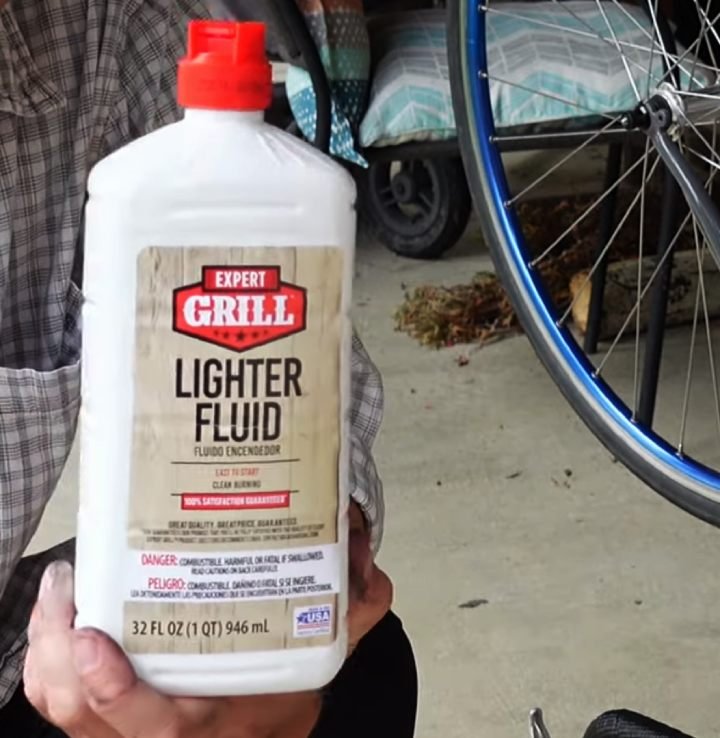
Place the chain in a jar and pour lighter fluid over it. Shake the jar to clean the chain thoroughly, removing grease and grime. Exercise caution and avoid open flames during this step.
Additional Bike Cleaning:
Hose down the chain, cassette, and front chainring to remove any remaining dirt. Rinse the entire bike to keep it clean and inspect for any issues.
Drying and Reassembly:
Dry the bike partially, ensuring it’s dry enough for reassembly. Reassemble the chain onto the bike, making sure it’s free from any debris.
Motor Oil Application:
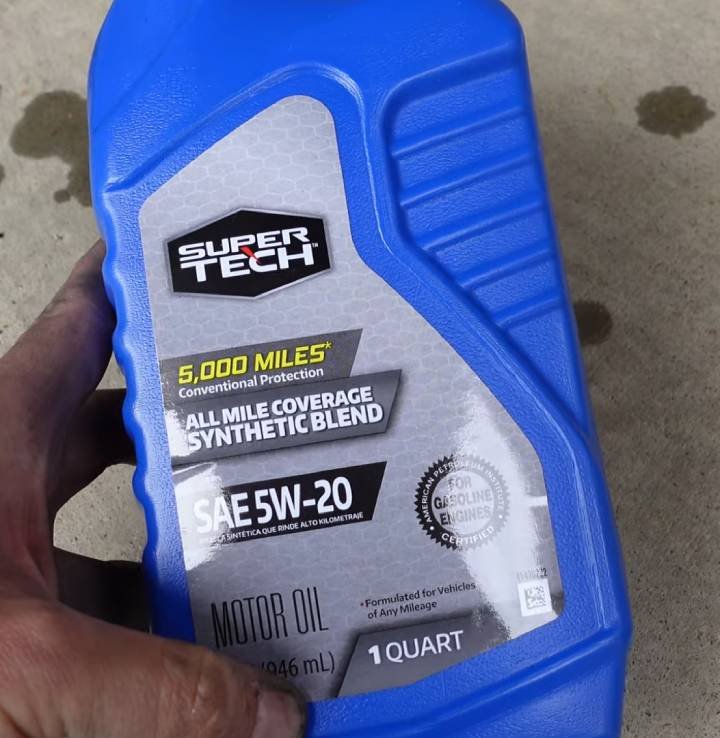
Consider using motor oil as a chain lubricant. Use a container with a nozzle or a repurposed bike chain oil container for easy application. Choose a lightweight motor oil for better results.
Apply and Wipe Excess:
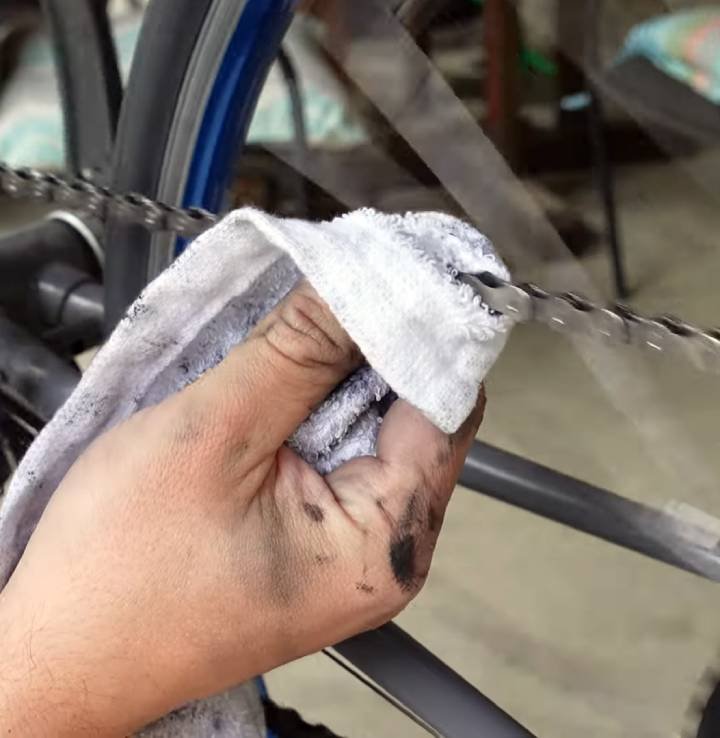
Apply motor oil to the chain, covering it evenly. Wipe off any excess oil with a clean rag to prevent attracting dirt and debris.
Final Check:
Run the chain through a clean section of the rag to remove any remaining excess oil. Ensure the chain is well-lubricated and ready for your next ride.
Note: While using motor oil for bike chains may be unconventional, the individual in the video claims to have successfully used this method for regular chain maintenance. Personal experiences may vary, and it’s essential to consider other options and professional advice for long-term chain care.
Conclusion
Experimenting with bike chain lube alternatives can be a fun and cost-effective way to discover what works best for your cycling needs. Whether you opt for household items like vegetable oil and olive oil or explore specialized options like beeswax and paraffin wax, the key is regular maintenance. Keep in mind that different lubes may be better suited to specific riding conditions, so choose the alternative that aligns with your cycling habits.
